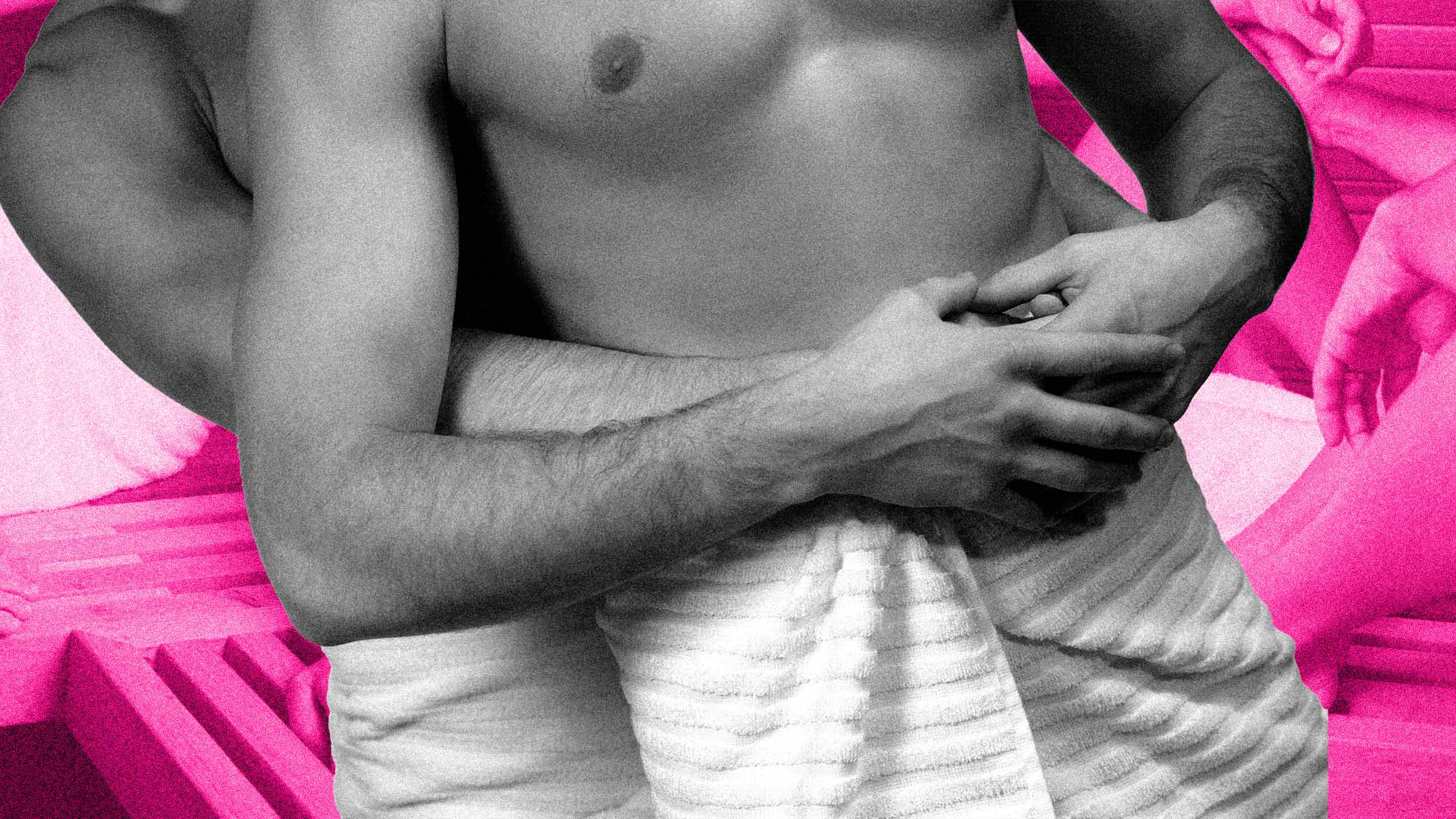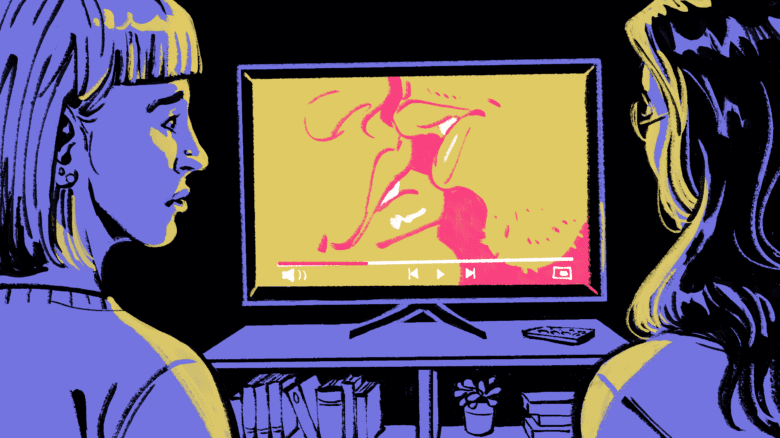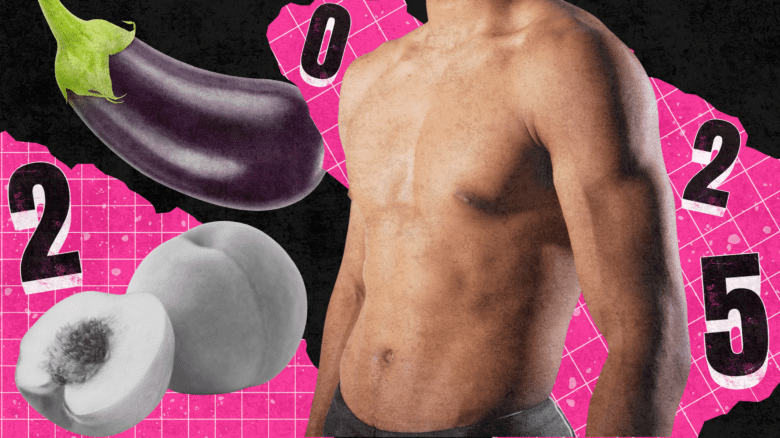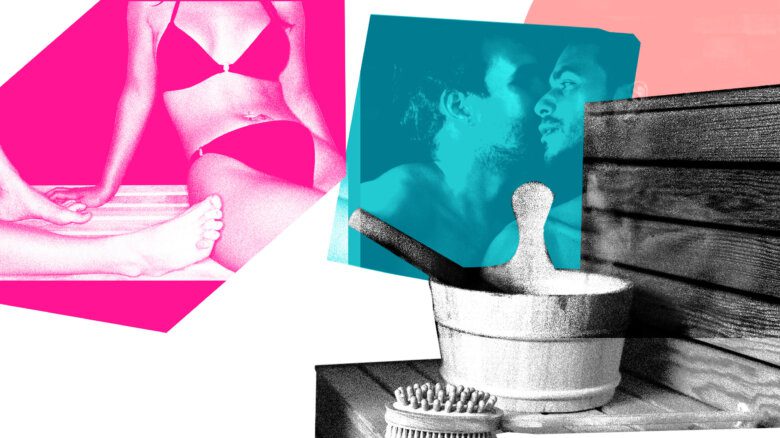In the late 1970s and early ‘80s, Paul M. would often fill himself with liquid courage before he slipped through the doors of Club LaGrange, a gay bathhouse that occupied a worn but majestic brownstone in a gritty slice of downtown Boston.
Up a flight of stairs, he’d approach the counter, supply his name and some cash, before proceeding to a room or locker, where he’d stow his clothes and don a towel. Then, for the night, he was anonymous and free to explore the showers, saunas and private rooms of the club—each space a new opportunity to cruise for sex.
“I was young, horny and in the closet,” says Paul, now 82 years old; the bathhouses—outside the gaze of the more public gay bars—filled a need for him.
Boston never had a legendary gay bathhouse scene like those in New York or San Francisco—partly due to a hangover of “Puritan prudishness” that augured a tamer scene overall, according to historians. Boston’s gay community, some of its own members admit, was not as “wild” or uninhibited as those in other large American cities. But for a period in the 1970s and ’80s, a string of baths in the city gave gay men like Paul crucial community spaces—which were also on the forefront of public health, before and after the AIDS crisis hit.
“Bathhouses thrived, to a certain extent, on being safe places when other places weren’t safe,” says Russ Lopez, author of The Hub of the Gay Universe: An LGBTQ History of Boston, Provincetown, and Beyond.
But it’s now been more than 25 years since Boston—New England’s largest city—has been home to a gay bathhouse.
Neighbouring (and much smaller) Providence, Rhode Island, still maintains such an establishment, as do New York, Chicago and San Francisco, to name a few American cities. Yet in Boston, what was once a small but important cluster of baths has been lost to fire, gentrification and the shifting needs of the LGBTQ2S+ community.
“I really think these places should be there. They provide a service,” Lopez says.
The first documented gay bathhouse in Boston was a spot dubbed Ludine’s Turkish Baths that could hold 150 people, according to Lopez’s book. “It had Moorish arches and tile work to make it look like a hammam,” he writes, and on “Friday and Saturday nights, there’d be a whole line of people going from the steps down, down along Carver Street, to get into the place.”
It closed in the 1960’s, and another bathhouse wouldn’t open until the early ’70s, when the national Club Baths and Regency chains each opened a location in Boston. These became the two mainstays of Boston’s gay bathhouse landscape through the ’70s and early ’80s, with local startups such as Saunatek, Club 297 or Liberty Tree Health Spa cycling in and out.
There were never more than two or three baths operating simultaneously in Boston. Gay bars, instead, occupied a larger part of the local gay culture in this era. Lopez explains that this was because, unlike other American cities, it was not illegal in Boston to serve openly gay men in a bar. “Which is not to say they weren’t harassed” by police, Lopez says, but there were no raids and mass arrests like those in New York City that famously inspired the Stonewall uprising. In Boston, “you might be harassed, but you’re not going to lose your job, lose your life,” he says.
With gay bars more or less tolerated by the public and police, there was less pull to the anonymity of a bathhouse. Which might also be why, as gay bars proliferated in neighbourhoods across the city, bathhouses remained clustered in the “Combat Zone,” a district so-named for its mix of violence and other businesses like strip clubs and porn theatres, deemed “undesirable” by city leaders.
Bathhouses “certainly had the reputation for being sleazy, I think an undeserved reputation for being sleazy,” says Michael Bronski, Professor of the Practice in Media and Activism at Harvard University—and a former LaGrange baths employee. “They were community institutions.”
Indeed, they still are. One does not go to a bathhouse only for sex. Inside, the vibe can be rather social, not all that different from a bar. Except, because you were wearing only a towel (or less), “notions of class, notions of respectability … of where people worked, were all missing,” Bronski says, allowing friendships to form across class boundaries.
“There was courtesy at the baths,” Paul recalls. “It was safer, in my mind, than cruising, which I did a lot of as well.”
Bars tended to self-segregate among jocks or queens or other gay stereotypes, Bronski says. “The baths cut through all of that,” he says. They could also be an alternative to cruising in Boston’s many parks and back alleys, a popular pastime of the era. “There was courtesy at the baths,” Paul recalls. “It was safer, in my mind, than cruising, which I did a lot of as well.”
A 1976 article in the Gay Person’s Guide to New England noted, “Contrary to another fear, baths are (with a few conscious and organized exceptions) open, non-judgmental, accepting places. You will not be ridiculed.”
In the early ’70s, John Kyper also became a devotee of Club LaGrange. He, too, found that he was mostly treated well by the strangers he met there, some of whom even became casual relationships or repeated liaisons.
Both Kyper and Paul continued to patronize the Boston baths after the AIDS epidemic hit in the early ’80s, and even saw the increased value of them during the crisis. The baths, rather than closing down completely, started distributing condoms. “You tried to take what steps you can,” Paul says. “It didn’t slow us down at all. We did what we did,” albeit with more protection.
Boston’s baths avoided, to some extent, the fierce debate over bathhouse closures that consumed San Francisco, in particular. This was, again, rooted in Boston’s more docile gay scene. “From the beginning it was clear that people who became infected in Boston had not overindulged; they were merely unlucky,” Lopez writes in his book. “Thus the debate that focused on bathhouses in San Francisco and debauched bars in New York failed to gain traction within Massachusetts.”
Instead, the baths in Boston inhabited a public health role they had taken up even before AIDS. Bronski, while working at LaGrange in 1978, remembers a weekly visit from a nurse who offered free testing for gonorrhea and syphilis.
But perhaps due to simple fear or misconceptions, Boston’s baths nonetheless began to lose their clientele during the AIDS crisis, and by the end of the ’80s, began to shutter. LaGrange hung on until 1985. From 1986 to 1989, Club 297 was the sole remaining bathhouse. Its closure was heralded as the end of Boston’s bathhouse era, but not attributed to unsafe sex practices. Boston officials shut it down for a number of violations, among them unlit exit signs and a lack of fire exits, according to a 1989 article in Gay Community News; some claimed the city’s actions were motivated more by homophobia than a real concern for safety. A month later, the club burned down in a fire that was later determined to be an insurance-motivated arson.
“If AIDS wasn’t enough to kill the bathhouses, the twin forces of gentrification and broader LGBTQ2S+ acceptance mostly finished the job in Boston.”
Club 297’s closure, however, was not the death knell observers first predicted. Four years later, in 1993, the Safari Club opened as a new bathhouse in the South End—a location it chose after an initial proposal for the Fenway area generated opposition from neighbours. The club remained until 1999, when it too was shut down by city officials citing code violations.
If AIDS wasn’t enough to kill the bathhouses, the twin forces of gentrification and broader LGBTQ2S+ acceptance mostly finished the job in Boston. Safari’s closure would be the real and enduring end for the city’s bathhouses.
The former “Combat Zone” has since been transformed into a non-threatening (if not especially vibrant) shopping and theatre district. In 2013, the LaGrange building (designed by famous architect H.H. Richardson) was renovated into luxury apartments. The former Club 297 on Franklin Street is slated for the same fate. And the old Safari Club is now condos.
Around the same time, as queer sexuality became less stigmatized and the community achieved more visibility, there was less need to slither into an anonymous sex club under the cover of night. If you’re not in the closet, there’s little reason to hide.
And while Boston is left without a single gay bath, even in cities that still have them, American bathhouse culture is now a shadow of its former self.
“Freedom is actually bad for a bathhouse,” Lopez says.
And yet, during this time of increasing hostility toward LGBTQ2S+ people, a bathhouse would be a useful place for many of the same reasons it was in the ’70s: a place where queer sex could be had anonymously, outside the view of the public or the police. And a way to distribute information about safer sex, and conduct testing for HIV and other STIs. These simple actions, considered revolutionary or taboo 50 years ago, are once again in the crosshairs of politicians.
Paul, for his part, still yearns for the bathhouses of yore. He hasn’t been to one in a while, partly due his age, and partly because he’s currently in a relationship. But sometimes, he’s still tempted. “Being an old man doesn’t mean you stop being horny,” he says.


 Why you can trust Xtra
Why you can trust Xtra


